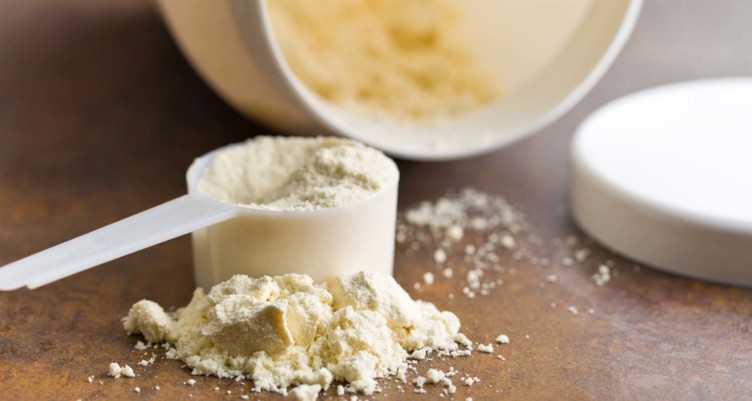Announcing New Version of the Bulletproof Diet: Upgrades to Sweeteners and Proteins

Every so often, we make small upgrades to the recommendations in the Bulletproof® Diet based on new research and suggestions from followers of this blog. Click here for access to the latest infographic. The goal is that you can have a single place to go to figure out the most optimal way to fuel your body and brain, then decide how optimal you want to be at any meal. Perfection is not necessary to be healthy, but knowing what “perfect” is makes it easy to target.
Here are the upgrades we made to the latest Bulletproof Diet.
- Added more detail about whey protein (read below) based on our research, and some prodding by Dr. Mercola. We moved whey concentrate to the left because it’s a more absorbable form of whey for those who can tolerate dairy proteins. We moved whey isolate to the right for people who can not tolerate whey concentrate.
- Moved sucrose (table sugar) to the right based on continued research, and we moved dextrose (glucose) to the left because it is much less harmful than fructose and mostly does not get stored as fat. It helps brain function in many cases too.
- Moved sorbitol, a sugar alcohol sweetener, to the right based on the fact that in type 2 diabetics, glucose turns into sorbitol, which can lead to nerve and tissue damage.
- Moved agave to the right based on high fructose levels.
- Added ace-k, also known as acelsulfame-potassium artificial sweetener, on the right hand side because it causes benign nodules to grow on the thyroid gland (happened to me years ago)
What You Need to Know About Whey
Whey protein is one of the most heavily marketed body upgrades. While some of these products are quite good, others are downright dangerous. With much marketing comes much confusion.
It’s time to set the record straight on whey protein. While all whey products have the standard list of ingredients, not all of them explain how the whey was processed before it was sitting on your countertop. The processing is the most important factor when choosing a whey protein.
Whey Protein Concentrate vs. Whey Protein Isolate
Protein concentrates are created by running the whey through a fine filter that lets everything through except the proteins, lactose, and fats that are chemically attached to them. People who have lactose intolerances often don’t do well with concentrates for this reason. At the same time, the body is able to use the proteins in concentrates easily because they’re attached to the sugars and fats (this is how protein is available in food). Concentrates are anywhere from 25% to 80% protein.
With isolates, the concentrate is further processed through acid extraction or cross-flow extraction. This separates the proteins almost entirely from the lactose and fats making isolate a more comfortable choice for the lactose intolerant. At the same time, this chemical processing method creates a substance that more foreign to the body. In nature, protein typically comes packaged with fats in the form of lipoproteins, and sometimes they are bonded to carbohydrates in the form of glycoproteins.
Heat-processed vs. Cold-processed
Almost all dairy products come from pasteurized milk, or are heated at some point during the processing. Proteins consist of amino acids which are linked together to form peptides. The amino acids in the protein carry differing charges, and while they are linked through the amino acid backbone, they attract and repel one another forming different physical structures like helixes, sheets, and hairpins. When the protein is heated, the attractive forces also change, and the protein takes on a new shape. Since the protein is no longer in its natural form, we refer to it as being “denatured.”
Since milk products are required by law to be pasteurized (to protect people from microbes like listeria), all whey protein powders have been pasteurized too, even the ones that are “cold-processed.” The cold-processed varieties are just heated fewer times and to lower temperatures than the normal or heat-processed products. The goal is to find one that has been heated as few times to the lowest temperature possible so your body can recognize the protein and use it.
What You’ll Find For Sale
Here are the basic categories of whey protein you’ll find on websites and store shelves:
- “Candy” whey protein products. The whole story is told right in the list of ingredients. These products shamelessly include chemical flavor enhancers, sweeteners, or way too much added sugar, and they’re damaging for all the reasons fructose and aspartame are damaging. If they add sugar, I wouldn’t trust the processing either.
- Heat-processed whey protein concentrates or isolates. These contain heavily denatured proteins, which are highly inflammatory and difficult for the body to use. Usually, you’ll find no mention of how the whey was processed on the packaging, and that’s because they are ashamed of it. The vagueness in the advertising on the label just exudes compunction.
- Cold-processed whey concentrates. Typically the whey proteins that are most like real food. A lot of the protein still hasn’t been denatured and it’s attached to fats and sugars in a decent, bio-available product the body can recognize and access.
- Cold-processed whey isolates that have been manufactured using ion-exchange/acid extraction. The pure protein has been completely separated from the fats and sugars, which makes the protein more difficult for the body to assimilate. In addition, the ion-exchange process can alter the protein shapes, in a way denaturing them like the heat does.
- Cold-processed whey isolates that have been manufactured using CFM (cross-flow microfiltration). The best form of whey isolate. Even though the fats and sugars aren’t bound to the proteins, the CFM process does not change the shape of the proteins.
Sign up for early access to sales, product launches, the latest Bulletproof news and more!



